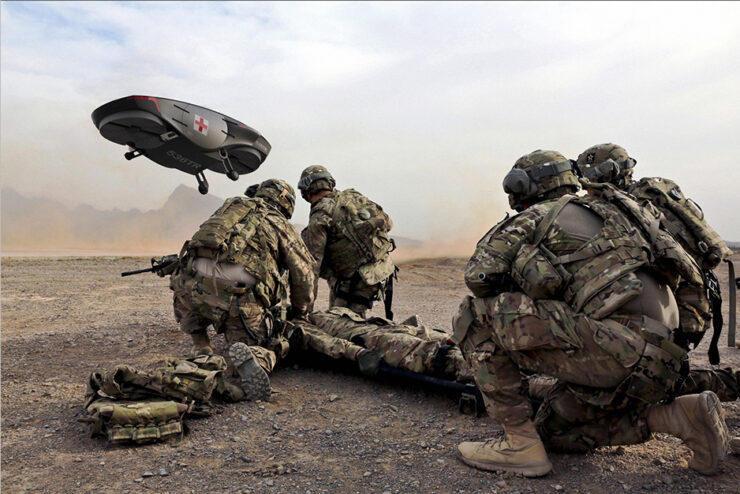
Tel Aviv: Israeli company Tactical Robotics is looking for a US partner. Following the recent AUSA event, the company is in preliminary talks with some US companies.
The company has recently completed a series of test flights performed with a technical demonstrator of its Cormorant fan craft UAV. Based on the results of these test flight the company will make changes in the platform.
According to the company following the tests flights some changes will be introduced to the demo craft used for the flight tests. One change already being introduced is the use of a new flight control system that will contribute to the stability of the Cormorant.
The test flights were performed with the technology demonstrator that is 80 % the size of the final operational Cormorant. The main target of the Israeli company now is to find an investor or strategic partner that will enable the transition for series production. The contacts made recently in the US are part of this effort.
The early prototype of the Cormorant was powered by a Turbomeca Arriel 1D1 which was later replaced by Turbomeca Arriel 2. Originally the prototype lift fans had four-blade rotors, but the currently used fans have six-blade rotors with staggered rotors for a speed variant. One additional recent change is the elimination of the thruster fans, as it has been found that with a modification to the internal fuselage shape and a few additional aerodynamic enhancements, it is possible to achieve the full flight envelope without the thrusters. This will reduce weight and complexity, save 30% of the width of the aircraft and also contribute to lower signatures and higher survivability. The change has already been incorporated in the current prototype and a number of flights have already been performed with the change incorporated.
The Cormorant’s fuselage is constructed from composites. Two 770 litre volume compartments, are designed to accommodate litters and casualties, with room for a variety of life support equipment. Initial interior cabin noise was measured in flight at 95 decibels without any incorporated acoustic treatment or liners. An additional 1,100 litres are available in an optional belly mounted compartment. The fuselage forms an air foil and generates over 50% of lift at high speed aerodynamic. A bulge between the ducted fans keeps the airflow attached to it, hence generating lift, while diverting the airflow into the aft fan for increased lift and thrust.
According to the company, the Cormorant has a useful load of 1,680 pounds. At a 110 mile radius of operation, it can carry up to 845 pounds of resupply. A payload of 300 pounds can be safely delivered to a radius of 186 miles. It has top cruise speed of 100 knots and the typical cruise speed with heavy load of 70 knots. Total available cargo volume is 5,000 litres, with an additional 500 litres available in an optional belly mounted storage.
The Cormorant is capable of flying through adverse weather conditions such as low visibility due to rain, humidity (cloud/fog), icing conditions, and cross winds up to 40 knots. Embedded safety features in system redundancy, ballistic parachute, and health monitoring systems. The Cormorant is compatible with the Palletized Load System (PLS) flat track system. Pre-flight checks, refuelling, mission loading, and launching of the aircraft can be performed by a three-man team in under 15 minutes.








